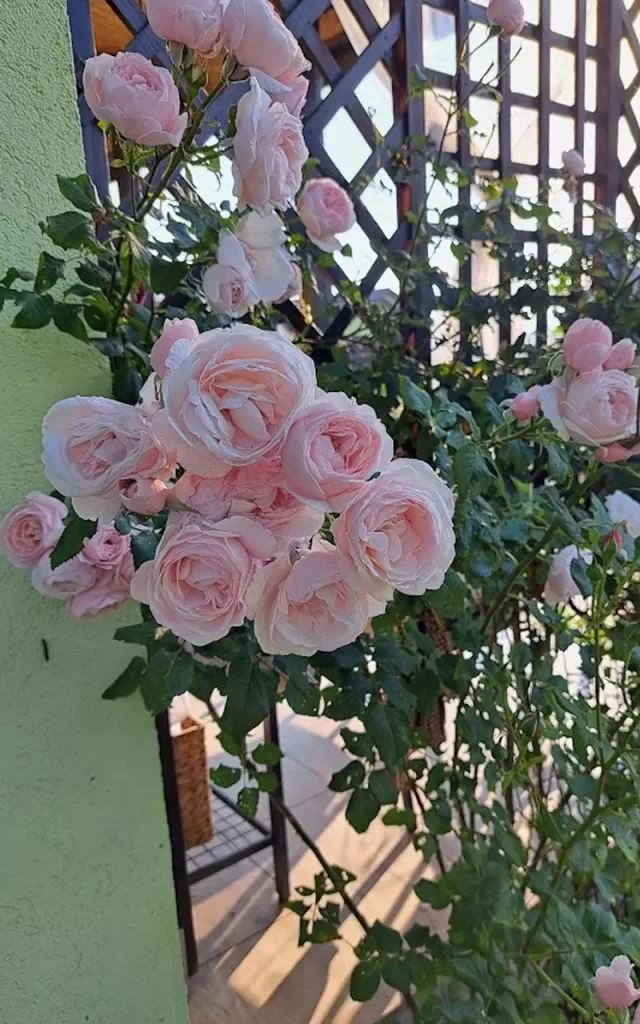The Queen Elizabeth rose is a celebrated hybrid tea rose that’s as regal as it sounds. Known for its tall, elegant stems and charming pink blooms, this rose is a classic favorite among gardeners worldwide. Whether you’re a seasoned gardener or new to rose care, this comprehensive guide will help you grow and maintain the Queen Elizabeth rose, ensuring it flourishes year after year in your garden.
Understanding the Queen Elizabeth Rose
The Queen Elizabeth rose, introduced in 1954, is a hybrid between a floribunda and a grandiflora. This unique lineage gives it the tall, stately structure of a grandiflora and the multi-bloom characteristic of a floribunda. With a mild fragrance, hardy constitution, and clusters of large, pink blooms, this rose is both an ornamental delight and a robust garden performer.
- Botanical Name: Rosa ‘Queen Elizabeth’
- Plant Type: Hybrid grandiflora
- Bloom Color: Light pink to medium pink
- Bloom Size: 4-5 inches across
- Fragrance: Light and sweet
- Bloom Time: Repeats from late spring through fall
- Hardiness Zones: 5-9
- Mature Size: 4-6 feet tall, 3-4 feet wide
- Ideal Conditions: Full sun, with well-draining soil
Planting Queen Elizabeth Roses for Optimal Growth

1. Choosing the Right Location
Queen Elizabeth roses thrive best in locations that receive at least 6 hours of direct sunlight each day. Morning sunlight is particularly beneficial, as it helps dry moisture on the leaves, reducing the risk of fungal diseases. While they are fairly adaptable, these roses show their best blooms when exposed to ample sunlight.
2. Soil Preparation and Planting
Roses flourish in slightly acidic soil with a pH between 6.0 and 6.5. Preparing the soil properly before planting is essential to provide a nutrient-rich environment for the Queen Elizabeth rose.
- Amend Soil: Mix compost or well-rotted manure into the planting area to improve soil structure and fertility.
- Drainage: Ensure proper drainage to prevent root rot. If necessary, amend clay-heavy soil with sand or plant in raised beds to enhance drainage.
- Spacing: Plant Queen Elizabeth roses 3-4 feet apart to allow adequate air circulation, which helps prevent disease.
3. Planting Process
Dig a hole that is twice the width and depth of the root ball. Position the rose bush in the hole, ensuring the bud union (where the stem meets the roots) sits 1-2 inches above the soil line in warmer climates and just below in colder regions.
Watering Requirements for Queen Elizabeth Roses
1. Consistent, Deep Watering
For best growth, Queen Elizabeth roses require regular, deep watering, especially during dry periods.
- Frequency: Water deeply once or twice a week.Adjust the frequency according to soil type and weather conditions.
- Method: Use a soaker hose or direct water at the base of the plant to avoid wetting the foliage, which can encourage fungal diseases.
- Mulching: A layer of mulch (about 2-3 inches thick) around the base helps retain moisture, moderates soil temperature, and reduces weed growth.
Fertilizing Queen Elizabeth Roses
Queen Elizabeth roses are vigorous bloomers and benefit from a structured feeding routine.
1. Initial Fertilization
Start with a balanced fertilizer applied at the beginning of spring to promote strong initial growth.
2. Ongoing Feeding Schedule
Throughout the growing season, use a rose-specific fertilizer or balanced plant food.
- Frequency: Feed every 4-6 weeks during the growing season, from early spring to late summer.
- Type of Fertilizer: Organic options like compost tea, fish emulsion, or well-balanced commercial rose food can provide steady nutrients.
- Late-Season Fertilization: Avoid fertilizing in late summer or fall to prevent new growth that would be susceptible to winter damage.
Pruning Queen Elizabeth Roses for Health and Shape
Pruning is essential to maintain the shape of Queen Elizabeth roses, encourage air circulation, and remove dead or diseased growth. Proper pruning also encourages new blooms.
1. Best Time to Prune
The best time to prune Queen Elizabeth roses is in early spring, just as the buds begin to swell.
2. Pruning Technique
- Remove Dead and Diseased Wood: Cut back any dead or damaged canes to the base.
- Shape the Plant: Trim to maintain an open, airy shape that allows sunlight to reach the center of the plant.
- Cut at a 45-Degree Angle: Make cuts just above outward-facing buds to encourage outward growth and improve air circulation.
3. Deadheading for Continuous Blooming
Deadheading, or removing spent blooms, encourages the plant to produce new flowers.
- Method: Snip blooms just above the first set of five leaves.
- Frequency: Deadhead regularly throughout the growing season to extend blooming.
Protecting Queen Elizabeth Roses from Pests and Diseases
Despite its resilience, the Queen Elizabeth rose can be susceptible to some common rose diseases and pests. Early prevention and treatment are key to maintaining healthy plants.
1. Common Pests
- Aphids: Tiny green or black insects that gather on new growth. Use insecticidal soap or introduce natural predators, such as ladybugs.
- Spider Mites: These tiny pests cause stippled, yellow leaves. A strong spray of water or insecticidal soap can help keep them in check.
- Japanese Beetles: Handpick or use neem oil to deter these damaging pests.
2. Fungal Diseases
- Black Spot: Characterized by dark spots on leaves, often leading to yellowing and leaf drop. Prune affected leaves and avoid wetting the foliage. Apply fungicide if needed.
- Powdery Mildew: A white, powdery coating on leaves. Improve air circulation by pruning and keep the area around the plant free of debris.
3. Preventive Measures
- Mulch and Clean Up: Mulching helps retain moisture while keeping fungal spores from splashing onto the leaves. Clear away any fallen leaves or debris to prevent the spread of disease.
- Prune for Airflow: Ensure good airflow around the plant by spacing roses properly and pruning regularly.
Winter Care for Queen Elizabeth Roses
Proper winter care ensures that Queen Elizabeth roses emerge in spring ready to bloom.
1. Mulching and Insulation
In late fall, apply a thick layer of mulch (6-12 inches) around the base of the rose. This insulates the roots and protects them from extreme temperature fluctuations.
2. Additional Protection in Harsh Climates
For colder regions (zones 5 and below), consider additional protection:
- Burlap Wrap: Surround the plant with a burlap wrap to shield it from harsh winter winds.
- Soil Mounding: Pile additional soil around the base for extra root protection.
Tips for Extending Blooming Season and Encouraging Healthy Growth
To get the most from Queen Elizabeth roses, maintain a regular care routine with a focus on watering, feeding, and pruning. Inspect plants often for signs of pests or disease, taking prompt action if issues arise. With its tall, elegant growth and lovely pink blooms, the Queen Elizabeth rose adds charm to any garden, offering a beautiful reminder of how rewarding rose gardening can be with the right care.


